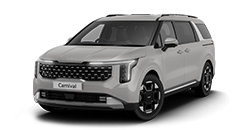open menu
- Home>
- discover kia>
- ASK>
- What engine is in my car?
What engine is in my car?
“You can identify your car's engine type by the VIN found in the owner’s manual or under the hood. The eighth digit contains the information on the engine.”
You can easily find out what kind of engine is in your car by checking the VIN, which can be seen in the owner’s manual or under the hood. The VIN can also be found on the front of the driver’s side dashboard in most cases. Out of the 17 digits in a VIN, the eighth character contains information about your car’s engine. Decode it to figure out what kind of engine your car has. If you are aware of the specific model, year of production, and trim level of your car, you may identify what kind of engine your model has by searching on the internet with such information.

Car engines are divided according to how cylinders in an engine are arranged:
- Straight engines’ cylinders are aligned in one straight row, parallel to the car. They are usually employed for saloon-type cars.
- Inline engines are the most common form, often used for small family cars like hatchbacks. They have cylinders arranged in a row in the engine bay similar to the straight type but at the right angles of the car, which allows components including the radiator, battery, and cooling system to be readily mounted around the sides.
- V engines’ cylinders are arranged at an angle from each other, forming a V shape when seen from the front. Such an arrangement is preferred for supercars and premium vehicles.
- Flat engine design places cylinders horizontally in two lines facing outwards. Although such an engine type is less commonly used than other designs, it features a lower center of gravity, enabling more comfortable handling in sports cars.
The number of cylinders in internal combustion engines affects the power and speed of the car. Simply put, the more, the more powerful.
- Twin-cylinder engines are not commonly employed because they have relatively low power, except for some models.
- Three-cylinder engines are mostly for small cars, but they can be used on larger vehicles with a turbocharger added.
- Four-cylinder engines are most frequently used and range from small to mid-size to slightly larger models.
- Five-cylinder engines feature the compactness of the four-cylinders and the smoothness of six-cylinders.
- Six- and eight-cylinder engines are used for high-end performance models and supercars.
Engines are also classified depending on the fuel injection method into GDI (Gasoline Direct Injection), MPI (Multi Point Injection), and CRDI (Common Rail Direct Injection).
- GDI, the most commonly used for gasoline engines, increases gasoline engines' efficiency by spraying fuel directly into the combustion chamber. This type of technology is relatively fuel-efficient and powerful; however, it is expensive and produces more noise and vibration than other gasoline engines.
- MPI is less fuel-efficient and powerful but has the advantages of lower vibration and noise besides good durability, as compared to GDI.
- CRDI is used for diesel engines, has a high combustion rate, and generates low emissions with more engine power.





